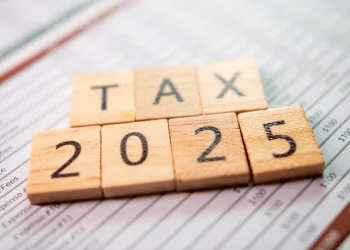Managing your personal finances can sometimes feel like trying to navigate a maze in the dark. You’re earning, you’re spending, you’re saving—maybe even investing—but how do you know if you’re on the right track? Well, here’s the thing: if you’re not tracking and measuring your personal finance goals, you might just be treading water without realizing it. But don’t worry! This article will help you take the guesswork out of it.
In this article, we’ll cover everything from setting clear goals to using tools and techniques that’ll keep you accountable. Ready to take control? Let’s dive in!
Why Measuring Your Personal Finance Goals Is a Game-Changer
Think about this: would you start a road trip without a map or GPS? Probably not. Tracking your personal finance goals works the same way—it gives you a clear sense of direction. When you measure your progress, you’re not just hoping things will improve; you’re actively working toward something tangible.
Here’s why tracking is essential:
- Accountability: When you monitor your progress, you’re less likely to stray off course.
- Clarity: It’s easier to make adjustments when you can see what’s working—and what’s not.
- Motivation: Seeing results, no matter how small, keeps you inspired to keep going.
Without tracking, it’s like flying blind. But when you measure your goals, you get to see just how far you’ve come—and how much further you need to go.
How to Set Personal Finance Goals That You Can Actually Measure
Before you can track anything, you need to set goals and rules that are both clear and achievable. This is where the tried-and-true SMART goal framework comes in handy.
What Are SMART Goals?
SMART is an acronym for:
- Specific: Be clear about what you’re trying to achieve. Instead of saying, “I want to save more,” say, “I want to save $5,000 for a vacation.”
- Measurable: Your goal should be trackable. For example, “I’ll save $500 a month for 10 months.”
- Achievable: Make sure it’s realistic. Don’t aim to save half your income if you know it’s not feasible.
- Relevant: Your goals should align with your personal values and priorities.
- Time-bound: Set a deadline to create urgency—like saving for a new car within two years.
When your goals meet these criteria, you’re setting yourself up for success.
Step-by-Step Guide to Tracking Your Personal Finance Goals
Now that you’ve set your SMART goals, it’s time to roll up your sleeves and start tracking them. Here’s how to do it:
1. Write It All Down
Start by putting your goals on paper (or a digital document). Why? Because writing things down makes them feel more real. Plus, it helps you stay organized.
- Create a dedicated notebook, spreadsheet, or app for your goals.
- Break each goal into smaller, actionable steps.
2. Use Budgeting Tools
Gone are the days of manually balancing a checkbook! There are tons of apps and tools that make tracking your finances a breeze.
Some popular options include:
- Mint: Tracks your spending, savings, and goals all in one place.
- YNAB (You Need A Budget): Helps you allocate every dollar with purpose.
- Personal Capital: Great for tracking both day-to-day cash flow and long-term goals.
These tools sync with your accounts, so you can see exactly where your hard-earned cash is going.
3. Track Your Progress Regularly
Checking in once a year isn’t enough. Make it a habit to review your progress on a regular basis—weekly, bi-weekly, or monthly.
Ask yourself:
- Am I sticking to my budget?
- Have I hit my savings targets this month?
- Are there areas where I can cut back or improve?
Consistency is key here. The more often you check in, the easier it’ll be to stay on track.
Tools and Techniques to Measure Your Personal Finance Goals
There’s no one-size-fits-all approach to tracking your goals. What works for someone else might not work for you. Here are a few methods to consider:
1. Create Visual Trackers
Visual aids can be super motivating. Think of them like fitness trackers for your wallet!
- Goal Charts: Draw a progress bar or use an app to visualize how close you are to reaching your goal.
- Savings Jars: If you’re saving for something specific, like a vacation, use a jar to collect physical cash and watch it grow.
2. Automate Your Finances
Automation is like setting your finances on autopilot. It’s a simple way to ensure you’re meeting your goals without having to think about it constantly.
- Set up automatic transfers to your savings account.
- Automate bill payments to avoid late fees.
- Use round-up apps like Acorns to save spare change effortlessly.
3. Use a Spreadsheet
For those who like to get hands-on, spreadsheets are a powerful tool. You can customize them to track exactly what you need, from monthly expenses to long-term savings.
Here’s what to include in your spreadsheet:
- Your goals (e.g., “Save $10,000 in 2 years”)
- Your monthly progress
- Notes on what’s working and what’s not
Overcoming Common Challenges When Tracking Your Goals

Let’s face it—sticking to a plan isn’t always smooth sailing. Life happens, and sometimes your goals might take a backseat. But don’t throw in the towel! Here are some common challenges and how to tackle them:
1. Unexpected Expenses
Life has a funny way of throwing curveballs, doesn’t it? An unexpected car repair or medical bill can derail your plans.
Solution: Build an emergency fund. Aim for 3-6 months of living expenses to cushion the blow.
2. Losing Motivation
It’s easy to get discouraged when progress feels slow.
Solution: Break your goals into smaller milestones and celebrate each win, no matter how small.
3. Tracking Fatigue
Let’s be honest—tracking every penny can get tedious.
Solution: Set up systems that simplify the process, like apps or automation. And remember, it’s okay to take a break now and then.
How to Stay Motivated for the Long Run
Tracking your personal finance goals isn’t a one-and-done deal—it’s a long-term commitment. So how do you stay motivated?
1. Keep Your “Why” Front and Center
Why did you set this goal in the first place? Maybe it’s to buy your dream home, pay off debt, or retire comfortably. Whatever your “why” is, remind yourself of it often.
2. Celebrate Progress
Every little step counts. Did you save an extra $50 this month? That’s a win! Treat yourself to something small (within reason, of course) to keep your spirits high.
3. Surround Yourself With Support
Find friends or family members who share similar goals. Share your progress, swap tips, and cheer each other on—it makes the journey way more fun.
The Bottom Line
Tracking and measuring your personal finance goals doesn’t have to be complicated or overwhelming. By setting clear goals, using the right tools, and checking in regularly, you can stay on top of your finances and work toward the life you want.
Remember, progress is progress—no matter how small. So get started today, and take control of your financial future. You’ve got this!













